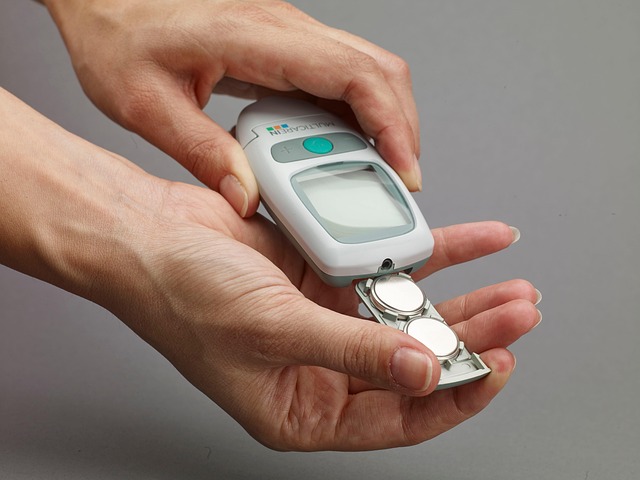Electronic diagnostics has become the cornerstone of modern electric vehicle (EV) maintenance, reshaping how technicians identify, isolate, and resolve issues. By embedding a network of sensors throughout the powertrain, battery, and charging systems, these tools provide real‑time data that was once impossible to capture accurately. The result is a more proactive, precise, and efficient service process that benefits both owners and dealerships. In this article we explore the ripple effects of electronic diagnostics across the entire electric car ecosystem, from on‑board sensors to parts logistics and future innovations.
How Electronic Diagnostics Change Maintenance
Traditional mechanical diagnostics relied heavily on manual inspection and basic fault codes, often leading to guesswork and extended downtime. Electronic diagnostics eliminates many of these uncertainties by generating detailed fault codes tied to specific component sensors. For instance, a sudden drop in motor efficiency can now trigger an immediate diagnostic readout that pinpoints whether the issue lies in the inverter, motor windings, or battery thermal management. This level of specificity dramatically reduces the time a vehicle spends under the lift, translating to cost savings and higher customer satisfaction.
Beyond fault detection, electronic diagnostics also captures performance trends over time. By continuously logging data such as cell voltage, current, temperature, and state‑of‑charge, technicians can spot subtle deviations before they become critical failures. Predictive maintenance models built on this data can schedule battery cooling system inspections, motor relay checks, or power‑train software updates well in advance, preventing unexpected breakdowns. This forward‑looking approach marks a fundamental shift from reactive to preventive service strategies in the electric car market.
Sensor Networks in Modern EVs
Every major electric car manufacturer now incorporates a sophisticated sensor grid that feeds data into a central controller. Key sensors monitor battery cell balances, motor temperature, inverter output, and regenerative braking efficiency. This network extends beyond the powertrain; tire pressure, suspension health, and even driver‑assist system status are tracked electronically. The aggregation of this information enables a holistic view of vehicle health, allowing service centers to identify cross‑system interactions that could affect performance.
Advances in sensor technology have also improved accuracy and reliability. MEMS (Micro‑Electro‑Mechanical Systems) sensors provide high‑resolution temperature and vibration data with minimal power consumption, essential for battery pack safety. On‑board diagnostics protocols such as OBD‑II, CAN bus, and LIN bus have been enhanced with proprietary extensions that expose richer datasets to mechanics. These developments have turned the vehicle into a living diagnostics platform, continually communicating its status to both the driver and the service ecosystem.
Impact on Service Centers
Service centers equipped with electronic diagnostics software can now perform faster and more accurate troubleshooting. The ability to download real‑time telemetry directly from the vehicle reduces the need for repetitive test drives and manual data logging. Mechanics can validate sensor readings against manufacturer benchmarks, ensuring that any interventions are based on verified information.
Moreover, electronic diagnostics streamlines the parts ordering process. When a fault code indicates a specific component failure, the diagnostic tool can cross‑reference the exact part number and even check regional inventory levels. This integration shortens the cycle time from diagnosis to repair, increases throughput, and boosts profitability for repair shops. As a result, electric car owners experience shorter service times and lower repair costs, encouraging broader adoption of EVs.
Training for Technicians
As diagnostic systems evolve, so too does the skill set required of automotive technicians. Training programs now emphasize data interpretation, software interfacing, and network troubleshooting in addition to traditional mechanical knowledge. Many manufacturers provide vendor‑specific certification courses that cover the nuances of their diagnostic protocols and toolsets.
Hands‑on workshops with simulation environments allow technicians to practice reading fault codes, interpreting sensor trends, and applying corrective actions in a risk‑free setting. These educational initiatives help close the gap between legacy mechanics and the demands of the electrified future. Consequently, technicians who master electronic diagnostics can command higher wages and secure roles in high‑volume EV service centers.
Parts Management and Supply Chains
Electronic diagnostics not only aids in identifying faulty components but also informs supply chain decisions. By aggregating service data across a fleet, manufacturers can identify which parts exhibit higher failure rates and adjust production volumes accordingly. This data‑driven approach reduces overstock and minimizes inventory holding costs.
Additionally, electronic diagnostics facilitates just‑in‑time parts delivery. When a diagnostic report flags a defective inverter, the service center can immediately notify the parts warehouse, triggering an automated order. The resulting tighter coordination between diagnostics, inventory management, and logistics shortens turnaround times and ensures that replacements are available when needed.
Predictive Parts Replacement
One of the most transformative uses of electronic diagnostics is predictive parts replacement. By continuously monitoring degradation markers such as increased temperature spikes or voltage imbalance, the system can forecast when a component will fail. Technicians can then schedule preventive replacements, often before the vehicle becomes unsafe or its performance deteriorates.
Predictive replacement also offers economic advantages. Replacing a part just before failure reduces the risk of a costly breakdown and the associated repair costs that may include labor, downtime, and customer inconvenience. Over time, fleets that adopt predictive maintenance experience lower total cost of ownership, a key metric for commercial operators and insurance providers.
Future Trends in EV Diagnostics
The next wave of electronic diagnostics will likely integrate machine learning and cloud analytics. By feeding vast amounts of telemetry data into AI models, manufacturers can detect subtle patterns that human analysts might miss. These models can then provide real‑time health assessments, predictive alerts, and even automated diagnostic reports sent directly to the vehicle owner’s smartphone.
Another emerging trend is edge computing within the vehicle. Rather than transmitting all data to external servers, edge processors can analyze data locally, offering instant diagnostics while preserving bandwidth. This capability is especially valuable for high‑speed autonomous driving scenarios, where immediate decisions are critical for safety.
Integration with Telematics
Telematics, the fusion of telecommunications and informatics, is becoming the backbone of connected EV ecosystems. When coupled with electronic diagnostics, telematics enables remote monitoring and remote troubleshooting. A dealership can receive a diagnostic dump from a vehicle on the road, diagnose the issue virtually, and even provide firmware updates without the owner having to visit the shop.
For fleet operators, this integration translates into minimal service interruptions and optimized routing for maintenance. By receiving real‑time health alerts, fleet managers can prioritize vehicles that require immediate attention, thus maintaining high utilization rates. This synergy between diagnostics and telematics will likely become a standard feature in future electric car models.
In conclusion, electronic diagnostics is redefining every facet of electric car service and parts management. From sensor‑rich vehicles that communicate their health status to mechanics armed with real‑time data, the shift is both technological and cultural. Service centers that embrace these tools gain faster turnaround times, improved accuracy, and stronger relationships with customers. Meanwhile, parts suppliers and manufacturers benefit from data‑driven inventory control and predictive maintenance models. Looking ahead, the convergence of diagnostics, AI, and telematics promises an era where electric vehicles not only drive themselves but also care for themselves, leading to safer, more reliable, and more cost‑effective mobility solutions.




